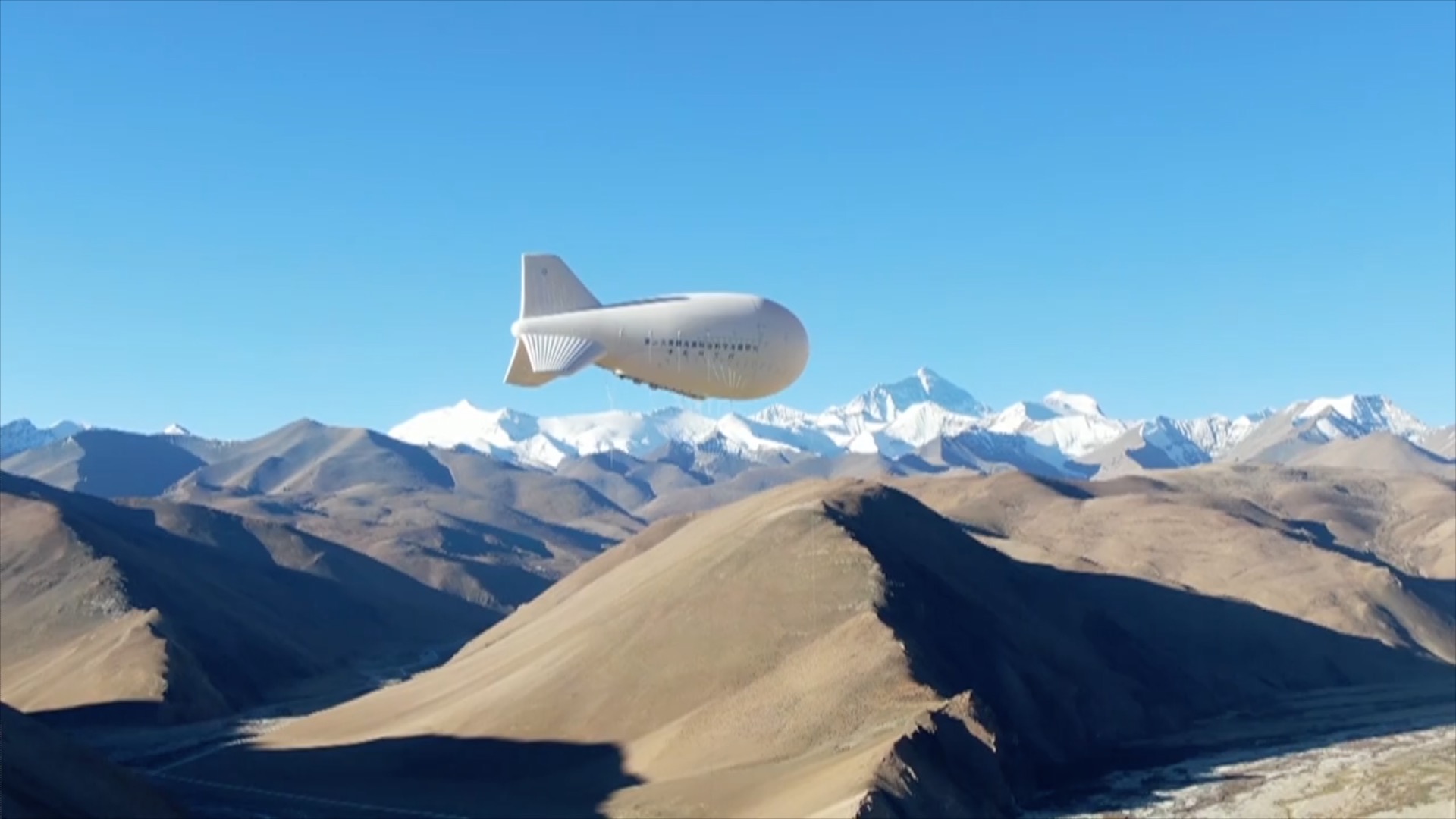Peking University, May 21, 2022: While global meteorologists rely on weather balloons to measure atmospheric changes, China has gone a step further. Beijing has flown an airship over Mount Everest, at a record altitude, to study atmospheric composition data and the water vapour transporting process from the surface.
At 2.625 tonnes, the airship, named Jimu No.1 has a volume of 9,060 cubic meters. (Photo: Screengrab/CGTN)
The airship flew at an altitude of 9,032 metres, higher than Mount Everest, which is 8,849 metres high. Flying at a speed of 30 metres per second, the airship took off from a base camp at an altitude of 4,300 metres on the world's highest peak. At 2.625 tonnes, the airship, named Jimu No.1 has a volume of 9,060 cubic metres and the vehicle attached to the bottom of the airship weighs 90 tonnes.
According to CGTN, the airship is mainly used to record atmosphere composition data that includes information on black carbon, dust, carbon dioxide, and methane present in the environment. Scientists are studying the water vapour transporting process from the surface to the altitude of 9000 metres.
The researchers from the Chinese Academy of Sciences, the Institute of Tibetan Plateau Research and the Aerospace Information Research Institute, the Changchun Institute of Optics, Fine Mechanics and Physics are part of the country's "Earth Summit Mission 2022" expedition.
Chinese scientists have said that it is important to study how the westerly wind affects the environmental change of the Tibet Plateau.
The latest world record comes just days after China completed a high-altitude ozone observation campaign on Everest, part of the second comprehensive scientific research project that was launched in 2017. During the campaign, a dozen ozonesonde balloons were launched from the base camp that reached an altitude of 5,200 metres, while the highest balloon touched 39.1 km above the base camp.
"We mainly want to look into the ozone that is both beneficial when in the stratosphere for blocking the sun's UV rays and providing human beings with a protective layer, and detrimental to human health when on the ground, where it becomes active and is harmful to our respiratory system," Zhu Tong, head of the College of Environmental Sciences and Engineering at Peking University told CGTN.
The research provided key data around Ozone that will be critical to studying environmental changes in the region.
